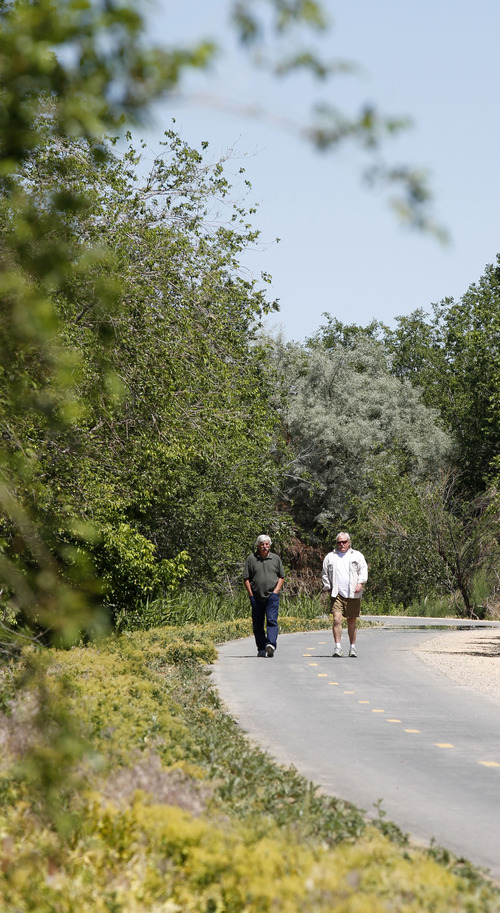This is an archived article that was published on sltrib.com in 2014, and information in the article may be outdated. It is provided only for personal research purposes and may not be reprinted.
Steve Van Maren had only one question about Salt Lake County's plan to hold a vote in November on extending the tax to support the zoo, arts and parks (ZAP) program.
"Can we double it?" joked Van Maren, of Sandy — the only citizen who regularly attends Salt Lake County Council meetings — at a public hearing the council held Tuesday on the proposed 10-year extension of the
Parley's Rails, Trails and Tunnels Coalition">ZAP tax.
His unofficial motion was seconded by Juan Arce-Larreta, chairman of the Parley's Rails, Trails and Tunnels Coalition, whose drive to finish a trail linking the Bonneville Shoreline Trail and the Jordan River Parkway receives considerable ZAP funding.
When County Council Chairman Michael Jensen observed that state law limits the ZAP tax to a penny for every $10 retail sale in the county, Arce-Larreta said the county should dismiss that impediment and do it anyway.
"Statutes were made to be broken or changed," he argued half-seriously. "Opportunities are being lost as long as the moneys are not there. Bump the tax up. I'm willing to pay for it."
Council members will find out Nov. 4 if other constituents share the enthusiasm that Van Maren and Arce-Larreta have for the ZAP tax.
Before then, though, the council will get another chance to hear what the public thinks about putting the ZAP tax, originally approved by county voters in 1996, on the general-election ballot for a third 10-year run.
A public hearing will be held Oct. 6, a Monday, at 4 p.m. in the County Council chambers, which are in the North Building of the County Government Center, 2001 S. State.
Last year, the ZAP tax pumped $13.3 million into roughly 200 organizations that county officials often point to as major contributors to Salt Lake's quality of life.
The public contribution reached almost $15 million in 2007, before the Great Recession crushed sales tax receipts, but it has climbed back.
Revenue from the tax goes into three pots.
Roughly two-thirds is divided between the county's 23 largest arts organizations, groups such as Red Butte Gardens and Ballet West.
Divvying up the rest are two zoological organizations — Utah's Hogle Zoo and Tracy Aviary — and community groups. Last year, 142 organizations as small as Salt Lake American Muslim and the Murray Concert Band split about $1.8 million.
Salt Lake City resident George Chapman's only complaint is that ZAP taxes are not used to support golf courses. He thinks money problems plaguing his city's courses could be rectified if public links were eligible recipients.
"These are open spaces important to the character of the community and they help reduce air pollution," Chapman said. "I want assurances you'll give funding to golf courses to protect them."
Once again, Jensen could not do so, noting state law specifies how the tax money may be used.
Laura Hanson, Jordan River Commission executive director, also voiced her support in a letter. Noting that ZAP funding help build many sections of the 45-mile-long trail, Hanson said it is used by more than 1,000 people daily as it cuts through three counties and 15 cities.
"On any given day you can see moms pushing strollers, serious athletes training for a race, bicycle commuters, kids using the trail to get to school and retired people just out fro a stroll," she said. "This amazing regional amenity might not be available today if not for the past support of the ZAP program."
Twitter: @sltribmikeg







